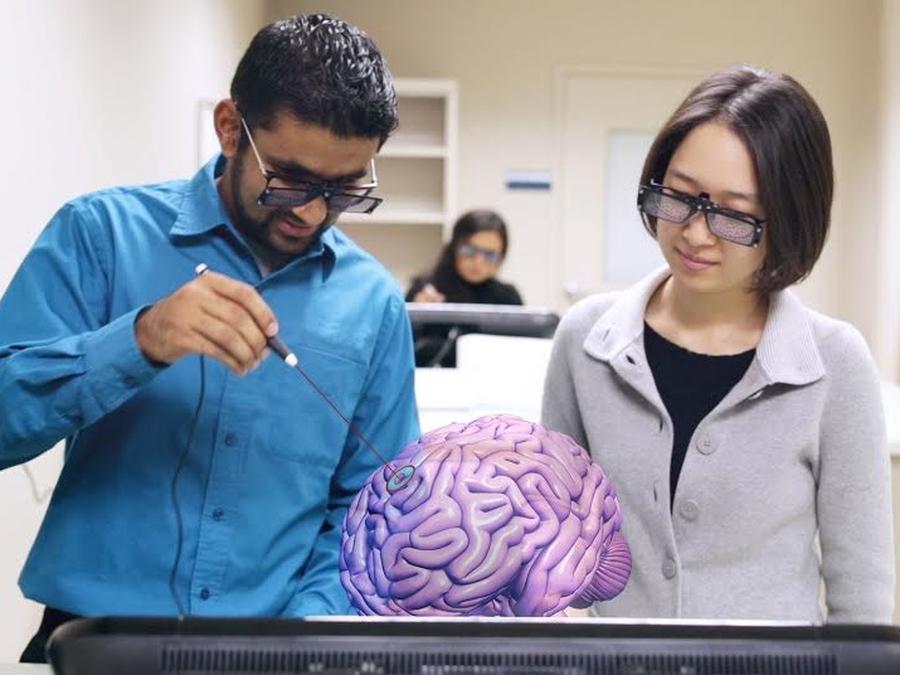If you are looking for the easiest DO schools to get into, you are at the right spot. After a research series, Kiiky has put together a list of the easiest DO schools for prospective medical students. Carefully read through.
Most times, the dream to become a medical doctor is abandoned as a result of stiff entry requirements like high MCAT and GPA benchmarks on the part of DO schools. To make things easier and the dream a reality, our list of easiest DO schools to get into will be of great aid.
DO school which stands for Osteopathic Doctor is one of the fastest-growing healthcare professions in the United States. Over the years, the profession has experienced a 68% increase in the total number of osteopathic doctors.
Before we go on to the list of easiest Doctor of Osteopathic DO schools, it is important you know why the choice of Osteopathic medicine is one in the right direction.
See the table of contents below for a quick overview.
Table of contents
- Why Doctor of Osteopathic (DO) School Is Important
- How Easy Is It To Get Into A DO School?
- What Are The Admission Requirements To Get Into A DO School?
- What Does DO Program look out for in Applicants?
- How Long Does It Take To Become A Doctor Of Osteopathic Medicine?
- What Are The Easiest DO Schools To Get Into In 2024
- 1. Liberty University – College of Osteopathic Medicine (LUCOM)
- 2. West Virginia School of Osteopathic Medicine (WVSOM)
- 3. Alabama College of Osteopathic Medicine
- 4. Campbell University – Jerry M. Wallace School of Osteopathic Medicine (CUSOM)
- 5. Lincoln Memorial University – DeBusk College of Osteopathic Medicine (LMU-DCOM)
- 6. University of Pikeville-Kentucky College of Osteopathic Medicine (KYCOM)
- 7. A.T. Still University School of Osteopathic Medicine in Arizona (ATSU-SOMA)
- 8. Touro University Nevada College of Osteopathic Medicine – Nevada Campus (TUNCOM)
- 9. Edward Via College of Osteopathic Medicine (VCOM)
- 10. Pacific Northwest University of Health Sciences – College of Osteopathic Medicine (PNWU-COM)
- Expert Guide For Prospective DO Applicants
- FAQs On Easiest DO Schools To Get Into
- Conclusion
- References
- We Also Recommend
Why Doctor of Osteopathic (DO) School Is Important
Osteopathic medicine, otherwise known as DO, provides all the benefits of modern medicine, including the prescription of drugs, surgery, and the use of technology to diagnose and evaluate ailments.
Unlike other types of medicine, DO schools have a “whole approach” to medicine. That is to say, they teach students the focus on the whole body rather than just the symptoms.
With a focus on preventive healthcare, Doctors of Osteopathic Medicine help patients develop attitudes and lifestyles that sustain good health. The focus is not just on curing illness but on preventing it.
Doctors of Osteopathic Medicine offer the benefit of hands-on diagnosis and treatment through a system of treatment known as osteopathic manipulative medicine.
To cap it all, DOs are complete physicians who, along with MDs, are authorized to prescribe medication and perform surgery in the United States. The only unique factor about DOs brings is the adoption of a holistic approach to patient care.
DOs are trained to be doctors first, and specialists second. Like a doctor of medicine (MD), a DO must first earn a bachelor’s degree, followed by four years in a DO school.
How Easy Is It To Get Into A DO School?
Getting into DO schools might not be that difficult, however, there are certain requirements and prerequisites to be met.
DO school which stands for Osteopathic Doctor is one of the fastest-growing healthcare professions in the United States. Over the years, the profession has experienced a 68% increase in the total number of Osteopathic doctors.
To get into DO schools, you still need to satisfy the medical school prerequisites, and meet the minimum GPA and MCAT score. Unlike Allopathic medical schools, Osteopathic medical schools accept lower average GPAs and MCAT scores.
Last year’s entering class, for example, had an average MCAT score of 26 and an overall GPA of 3.4. This compares with an average MCAT of 31 and an overall GPA of 3.69 for allopathic students who matriculated last year.
Nevertheless, each DO school looks out for the best student. To avoid missing out, the duty of meeting the said requirement is yours to do. Therefore, academic excellence should be the guide.
As we go further in this article we’ll list the easiest DO schools to enter and what makes them the easiest. I’m sure you are thinking of entry requirements now.
What Are The Admission Requirements To Get Into A DO School?
Prior to admission, all applicants must meet the following requirements:
- A bachelor’s degree from a recognized university
- GPA score
- MCAT
- Research experience
- Clinical exposure
- Statement of purpose
- Letters of recommendation
- Prerequisite courses (Physics, Chemistry, Biology, and English)
- English Proficiency for non-English speakers
Admission into DO might not be all tough, but trust me, it is competitive. To get admitted into a DO school, you must show proof of academic excellence, character, and determination. (sflix.video) These key areas of interest will be reflected through the aforementioned documents and test scores.
What this entails is that excellent academic performance does not make up for experiences character and motivation. To be on the safer side there’s a need to balance the beam.
What Does DO Program look out for in Applicants?
During the admission review, the admission committee carefully goes through the applications before selecting successful candidates for interviews. Here, the committee does not focus only on the MCAT and GPA score but on a whole lot of things in the application.
Enough emphasis is also placed on other aspects of the application such as; letters of recommendation, personal statements, and clinical and research experience amongst others. Therefore, applicants should be the best they can be in order to stand a chance.
Most importantly, a prospective student is expected to check out the school’s website to check the admission requirement of the school such as; GPA and MCAT requirements amongst others to know if he or she is on the right track.
Asides from the admission requirements, Osteopathic medical schools also look out for students with the following personal qualities;
- Well-rounded students
- Strong communication and interpersonal skills
- Strong record of community service
- Leadership skills
- Active in extracurricular activities
- Come from diverse backgrounds
- Are motivated to pursue a career in osteopathic medicine
- Possess knowledge of osteopathic medicine
- Have shadowed an osteopathic physician
How Long Does It Take To Become A Doctor Of Osteopathic Medicine?
To become a DO, you have to dedicate four years to academic study with an emphasis on preventive medicine and holistic patient care. After that, DOs serve a one-year internship where they gain experience in family medicine, internal medicine, obstetrics-gynecology, pediatrics, and surgery.
This series of academic exposures ensures that Osteopathic doctors get the best primary health care obtainable. Upon completion of the internship, many DOs move on to specialize, this residency program ideally takes two to six years to complete.
What Are The Easiest DO Schools To Get Into In 2024
With our list of easiest DO schools to get into, every prospective medical student has the duty of making the dream of wearing white robes a reality.
These schools are tagged easy to get into because of their entry requirements with special recourse MCAT and GPA requirements. See the list below:
- Liberty University – College of Osteopathic Medicine (LUCOM)
- West Virginia School of Osteopathic Medicine (WVSOM)
- Alabama College of Osteopathic Medicine
- Campbell University – Jerry M. Wallace School of Osteopathic Medicine (CUSOM)
- Lincoln Memorial University – DeBusk College of Osteopathic Medicine (LMU-DCOM)
- University of Pikeville-Kentucky College of Osteopathic Medicine (KYCOM)
- A.T. Still University School of Osteopathic Medicine in Arizona (ATSU-SOMA)
- Touro University Nevada College of Osteopathic Medicine – Nevada Campus (TUNCOM)
- Edward Via College of Osteopathic Medicine (VCOM)
- Pacific Northwest University of Health Sciences – College of Osteopathic Medicine (PNWU-COM)
Just as stated earlier on in this article, our list of easiest DO schools will be selected based on the following ranking factors:
Accreditation – All the DO programs on our list are accredited.
Entrance requirements – Unlike other medical schools, the entry requirements into the listed DO schools are not tough on aspirants. The MCAT and GPA score requirement is not above 505 and3.5 respectively.
Quality of Program – All the schools listed in this article possesses quality DO programs.
1. Liberty University – College of Osteopathic Medicine (LUCOM)
This four-year DO program will teach you how to understand health and disease so you can effectively diagnose and treat in order to improve a patient’s quality of life.
Here, you will gain specialized training in the musculoskeletal system combined with the latest advances in medical technology. Furthermore, you will learn how to treat more than symptoms as you help your patients achieve health in mind, body, and spirit.
Student-doctors at Liberty University’s College of Osteopathic Medicine (LUCOM) learn early on that a DO degree is key to a fulfilling medical career.
Accredited by the American Osteopathic Association Commission on Osteopathic College Accreditation (AOA-COCA)
Admission requirement
- Bachelor’s degree or higher from an accredited college or university.
- 3.0 GPA in Sciences. LUCOM has a preferred cumulative GPA of 3.4.
- Applicants must score 501 on the MCAT. LUCOM has a preferred MCAT standard of 504 or greater (cumulative) with no individual score less than 125.
2. West Virginia School of Osteopathic Medicine (WVSOM)
The WVSOM medical education program fosters the development of caring and compassionate physicians.
WVSOM is leading the charge to elevate community-based services to a more prominent position in our nation’s health care system. Our medical students are the top priority.
The rigorous program produces well-trained doctors who are dedicated, disciplined, and committed to being the best physicians by the books and by the bedside.
The student-centered class structure offers a 21st-century, clinically integrated approach to medical education. Courses are in three major areas: Biomedical Sciences, Clinical Sciences, and Osteopathic Manipulative Medicine.
The Commission fully accredits the West Virginia School of Osteopathic Medicine (WVSOM) on Osteopathic College Accreditation (COCA) of the American Osteopathic Association (AOA).
Admission requirements
- Applicants must complete 90 semester hours of credit from an accredited college and university.
- Students need to complete the following prerequisite coursework; English, Behavioral Sciences, Biology, Chemistry, Physics, and Labs
- Meet the GPA score of 3.2. The average science GPA is 3.54
- Satisfy the MCAT screening criteria of 495. The average MCAT score is 502.
- Submit two letters of recommendation.
3. Alabama College of Osteopathic Medicine
The Alabama College of Osteopathic Medicine (ACOM) is the first osteopathic medical school in the state of Alabama.
ACOM delivers a hybrid curriculum model utilizing discipline and system-based clinical presentation approaches in the pre-clinical years.
The curriculum presents core concept knowledge in the traditional discipline manner followed by student-centered teaching and learning through patient-centered, clinical presentation/system-based integrated courses.
ACOM is licensed by the Alabama Department of Public Education and fully accredited through the Commission on Osteopathic College Accreditation (COCA) of the AOA, which is the only accrediting agency for predoctoral osteopathic medical education.
Annually, ACOM accepts 424 students that meet the admission requirements below.
Admission requirements
High school diploma or its recognized equivalent.Bachelor’s degree from an accredited college or University.An official MCAT score of 503. Satisfy the GPA average score of 3.4.
4. Campbell University – Jerry M. Wallace School of Osteopathic Medicine (CUSOM)
As the leading and only osteopathic medical school established in the state of North Carolina, Campbell University School of Osteopathic Medicine equips students with a seamless development from learning to delivering the highest quality patient care in the communities they serve.
Osteopathic medicine merges the needs of the patient, the current practice of medicine, and the interconnectivity of the body’s ability to heal itself.
Osteopathic physicians have built a tradition of bringing health care to the grassroots– primary care specialties of family medicine, general internal medicine, pediatrics and obstetrics, and gynecology.
Prior to admission, every applicant’s academic background, test scores, achievements, personal statement, and all other vital documents will be scrutinized.
Admission to Campbell Medicine’s Doctor of Osteopathic Medicine program is highly competitive. Health-related work or research experience, community involvement, and promotion of diversity will be a great plus.
Admission requirements
- Bachelor’s degree from an accredited college or university.
- All applicants must tender valid MCAT scores. A minimum MCAT score of the 40th generally and in each section is required.
- Letters of recommendation.
5. Lincoln Memorial University – DeBusk College of Osteopathic Medicine (LMU-DCOM)
LMU-DCOM currently offers two locations for its Doctor of Osteopathic Medicine (DO) professional degree program: Harrogate, TN, and Knoxville, TN.
Quality educational programs are delivered through experienced faculty employing innovative teaching methods and state-of-the-art technology.
LMU-DCOM is fully dedicated to meeting the healthcare needs of the community and beyond with excellence in teaching, patient care, and services.
The curriculum stresses the interdependence of the biological, clinical, behavioral, and social sciences.
Furthermore, the emphasis will be on training physicians for primary care medicine, applying the distinctive osteopathic principles for maintaining health and treating disease.
Lincoln Memorial University-College of Osteopathic Medicine (LMU-DCOM) holds accreditation from the Commission on Osteopathic College Accreditation (COCA) to offer an academic program leading to the Doctor of Osteopathic Medicine (D.O.) degree.
Admission requirements
- A bachelor’s degree from an accredited college or university.
- MCAT score above 500 with 125 for each section.
- A cumulative GPA of 3.5.
- Applicants must be U.S. citizens or have permanent residency.
6. University of Pikeville-Kentucky College of Osteopathic Medicine (KYCOM)
The Kentucky College of Osteopathic Medicine (KYCOM) is ranked second among all D.O. and M.D. granting medical schools in the U.S. for graduates entering primary care residencies.
KYCOM’s guiding principle has always been to educate physicians to serve underserved and rural areas, emphasizing primary care. KYCOM prides itself on being student-centered in every aspect.
As a KYCOM student, dedicated and knowledgeable faculty and staff will provide you with a supportive environment to learn patient-centered care while utilizing advanced technology.
(KYCOM) provides men and women with an osteopathic medical education that emphasizes primary care, encourages research, promotes lifelong scholarly activity, and produces graduates with the zeal to serve the healthcare needs of communities in rural Kentucky.
Kentucky College of Osteopathic Medicine holds accreditation from the American Osteopathic Association’s Commission on Osteopathic College Accreditation (COCA).
7. A.T. Still University School of Osteopathic Medicine in Arizona (ATSU-SOMA)
A.T. Still University (ATSU) is the founding institution of osteopathic healthcare, established in 1892 by Andrew Taylor Still with two campuses (Kirksville, Mo., and Mesa, Ariz.)
ATSU is popular for its preeminence as a multidisciplinary healthcare educator. The University focuses on integrating the founding tenets of osteopathic medicine and the advancing knowledge of today’s science.
Furthermore, ATSU continually earns distinctions as a graduate health sciences university with a best-in-class curriculum and a community outreach mission to serve the underserved.
ATSU instills within students the compassion, experience, and knowledge that treats the whole person and shapes healthcare in communities where needs are greatest.
The University is accredited by the Higher Learning Commission.
8. Touro University Nevada College of Osteopathic Medicine – Nevada Campus (TUNCOM)
The Touro University Nevada Osteopathic Medicine program prepares students to become outstanding osteopathic physicians who uphold the values, philosophy, and practice of osteopathic medicine and who are committed to primary care and the holistic approach to the patient.
DO program advances the profession and serves its students and society through innovative pre-doctoral and post-doctoral education, research, community service, and multidisciplinary and osteopathic clinical services.
Admission requirements
- Bachelor’s degree
- Minimum 3.0 in science and overall GPA
- Minimum MCAT score of 500
- Prerequisites in biology, physics, and inorganic and organic chemistry
- Physician shadowing experience
9. Edward Via College of Osteopathic Medicine (VCOM)
Ranked as the No.5 most affordable private medical school according to U.S. News & World Report, doctor of osteopathic medicine (DO) prepares future doctors to become well-rounded, community-focused physicians.
In addition to the traditional MD training in a wide range of specialties, you’ll learn a whole-person osteopathic approach to guide you in a lifelong mission of serving the underserved.
The College is accredited through the Commission on Osteopathic College Accreditation (COCA) of the AOA.
Admission requirements
- Applicants must earn a baccalaureate degree before matriculation.
- Applicants must have completed 90 hours or three-fourths of the required credits in Biological Sciences, Physics, General Chemistry, Organic Chemistry, and English.
- Applicants must achieve at least a 3.2 science and cumulative grade point average. The average GPA of accepted students is 3.5 to 3.6.
- Applicants must submit current scores from the MCAT that are less than four years old prior to the date of matriculation.
- The average MCAT of applicants is 500. Applicants with an MCAT of less than 494 are generally not considered for an interview (and higher MCATs are more competitive).
10. Pacific Northwest University of Health Sciences – College of Osteopathic Medicine (PNWU-COM)
The College of Osteopathic Medicine is based in Yakima, in the heart of Central Washington characterized by medically underserved and rural populations. When its doors opened in 2008, it was the Pacific Northwest’s first medical school in 60 years.
PNWU-COM has a renowned faculty, talented and committed staff, and an administration that concentrates on high-tech, healing-touch medical education, as well as osteopathic principles and practice to train the next generation of physicians.
The Commission accredits PNWU-COM on Osteopathic College Accreditation (COCA) of the American Osteopathic Association.
Admission requirements
- The minimum age to matriculate at PNWU-COM is 18 years of age.
- Applicants must be US citizens or permanent residents.
- Applicants must have earned a baccalaureate, master’s, or doctoral degree from a regionally accredited college or university.
- Medical College Admissions Test (MCAT) official scores are required and must be sent to AACOMAS.MCAT test scores are valid for three years from the original test date. The school’s website did not disclose the official MCAT scores.
- The test cannot be taken later than January 31 of the year medical school starts.
- Satisfactory completion of the following college courses, which may include laboratory work, before matriculation.English composition and literature: 6 semester hours/9 quarter hours, General Chemistry: 8 semester hours/12 quarter hours, Organic chemistry: 8 semesters hours/12 quarter hours (4 semester hours can be biochemistry), Physics: 8 semesters hours/12 quarter hours, Biological Sciences: 12 semester hours/18 quarter hours.
Expert Guide For Prospective DO Applicants
With the list of easiest DO schools before you, the duty is yours to leave up to expectation by giving your best in your academics so as to pull up a good GPA and MCAT scores.
In addition to that, you also need to know and understand how to write a medical school personal statement. CLICK HERE to see samples of well-written medical school personal statements.
Lastly, pay close attention to the application procedure and requirement of your choice of school to avoid erroneous outcomes.
FAQs On Easiest DO Schools To Get Into
Getting into DO schools might not be that difficult, however, there are certain requirements and prerequisites to be met. Such as MCAT and GPA test scores.
To become a DO, you have to dedicate four years to academic study with an emphasis on preventive medicine and holistic patient care. After that, you spend an additional one to four years on internship and specialization.
Osteopathic medicine, otherwise known as DO, provides all the benefits of modern medicine, including prescription of drugs, surgery, and the use of technology to diagnose and evaluate ailments.
The admission requirements into the easiest osteopathic schools are:
A bachelor’s degree
Transcript
Letter of recommendation
Personal statement
GPA
MCAT score
Conclusion
Most times, the dream to become a medical doctor is forgotten as a result of stiff entry requirements like high MCAT and GPA benchmarks on the part of DO schools. However, with our list of easiest Osteopathic schools to get into, consider the dream a reality.
References
- Insidermonkey.com
- USnews.co
- https://choosedo.org/why-consider-a-career-in-osteopathic-medicine/
- https://www.pcom.edu/about/what-is-osteopathic-medicine.html
We Also Recommend
- Easiest Physical Therapy Schools To Get Into | Expert Guide
- How To Become A Private Investigator In North Carolina (NC)
- Easiest Engineering Schools to Get into | Best Guide
- Easiest Osteopathic Schools To Get Into | Expert Guide
- How To Become a Professor | Fastest & Easiest Steps
Does this article meet your immediate needs? If yes, leave us with a 5-star rating in the Review Box below. If no, leave us an opinion in the comment box to express your concern or ask a question and we will get back to you as soon as possible.





